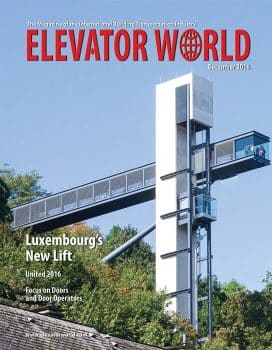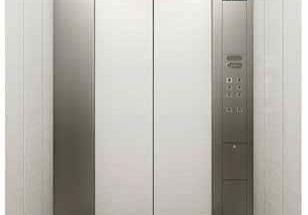Examining how an elevator service company can comply with OSHA’s requirement to “assess the workplace to determine if hazards are present”
OSHA has long had a regulation that requires employers to “assess the workplace to determine if hazards are present, or are likely to be present, which necessitate the use of personal protective equipment” (29 C.F.R. §1910.132(d)(1)). This is fairly straightforward for employers with a fixed place of business, like a warehouse or factory: a qualified person looks at the equipment and various tasks performed by employees in the workplace, determines if they pose likely hazards and concludes which personal protective equipment (PPE) is needed to protect against those hazards.
Employers with “mobile” employees, like an elevator service or repair company, have a more complicated compliance burden. Such a company may have hundreds of customers on contract, the locations of which are visited at various intervals. In addition, one-off calls for service or repair can result in visiting a new location only for a specific job. In those situations, how does an elevator service company comply with OSHA’s requirement to “assess the workplace to determine if hazards are present”?
A recent case involving a Walmart distribution center provides guidance. Although the case did not involve “mobile” employees, it involved one particular distribution center out of Walmart’s 120 across the U.S. OSHA inspected one in New Braunfels, Texas, and issued Walmart a citation for failing to perform the required PPE hazard assessment for that distribution center, among other things. The distribution center contested the citation, claiming it complied with the requirement by performing a “global” hazard assessment of another distribution center located in Arkansas. This hazard assessment served as a master hazard assessment for all other distribution centers nationwide.
An elevator service company should be cautious relying only on the hazard assessments, and resulting PPE determinations, contained in a standard work process.
The trial judge rejected this argument, concluding that the plain language of the standard, along with the explanation of the standard published by OSHA, required a hazard assessment at each particular workplace. The judge further found that the “global” hazard assessment did not constitute an assessment of the New Braunfels center, because Walmart failed to verify that work conditions at that location were the same as those at the assessed location in Arkansas. The judge reasoned that Walmart could not simply assume that the working conditions of the unassessed location were the same as those at the assessed location.
On review, the Occupational Safety and Health Review Commission agreed with the trial judge. The commission found that, because Walmart was relying on a “global assessment,” OSHA only had to show that this assessment did not take into account the specific working conditions of the New Braunfels distribution center. Reviewing the evidence, the commission found that it proved that Walmart never verified that conditions between the two facilities were equivalent. It, further, did not otherwise conduct a hazard assessment of the New Braunfels center for PPE. The violation was upheld.
Elevator service and repair companies can draw a few lessons from this decision. First, as an employer with “mobile” employees going to multiple jobsites every day, how can it comply with the “workplace specific” requirement of the PPE hazard assessment standard? One way is for the company to require that its mechanics perform a job hazard assessment (JHA) before performing work. The JHA will account for the activity being performed, the risks involved and which corrective measures, including PPE, are needed. The company should then train the mechanics in how to perform a JHA. It can be performed at the start of each day for big jobs or before the specific work for smaller jobs. Ideally, some record (i.e., a check sheet) is filled out by the mechanic, and the work proceeds. With this process in place, an elevator company performing modernization, repair or construction work complies with the standard on a workplace-specific basis.
Routine service work, with repeated visits under a contract for various reasons, is not exempt from the workplace-specific hazard-assessment requirement. Because service work is frequently routine and repetitive, involving the same tasks regardless of building address, many companies have standard work or maintenance processes regarding how the work should be performed. These standard processes have been developed based on the company’s knowledge of elevator equipment and the hazards associated with the tasks being performed. They usually also include direction as to the required PPE for the task.
It’s always easier, and frequently cheaper, to prevent an OSHA citation than to explain to a judge in court why the violation should be vacated.
Given the Walmart distribution center decision, however, an elevator service company should be cautious relying only on the hazard assessments, and resulting PPE determinations, contained in a standard work process. It is conceivable that, if the mechanic did not perform a specific JHA for the work, OSHA would assert that the company failed to comply with the workplace-specific PPE hazard-assessment requirement. The elevator service company may then be faced with demonstrating how conditions at that specific worksite were evaluated to determine they were the same as the assumed conditions underlying the PPE determinations in the standard work process.
How can a service company avoid being cited for violating the PPE hazard-assessment standard? One way would be to have a mechanic perform a hazard scan or assessment of the building at various intervals. Even one time would be enough (barring any change in workplace conditions), such as when the mechanic first gets the building on his or her route. Another possibility is that management performs (and documents) such an assessment as part of any walkthrough or inspection of the building when it comes under contract. The assessments could then be maintained in the contract file. Anything unusual can be noted and the necessary precautions or PPE used.
Complying with the requirement for a workplace-specific hazard assessment does not have to be complicated or time consuming. Most elevator companies are likely already complying with their existing JHA requirements and training. For those that aren’t, the company can make workplace-specific assessments, even with multiple workplaces, with a little tweaking of JHA procedures and a checklist. It’s always easier, and frequently cheaper, to prevent an OSHA citation than to explain to a judge in court why the violation should be vacated.
Get more of Elevator World. Sign up for our free e-newsletter.








